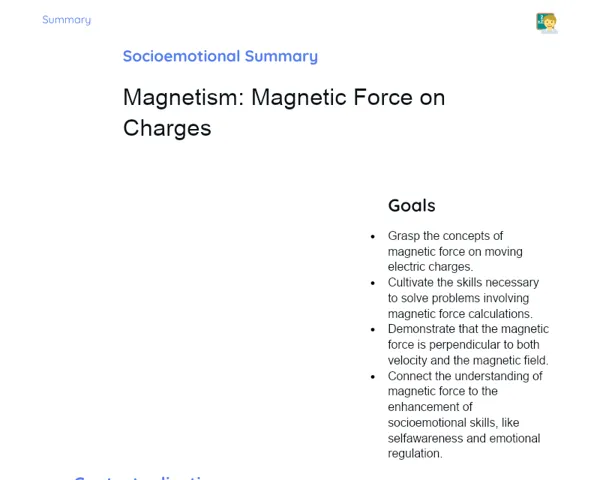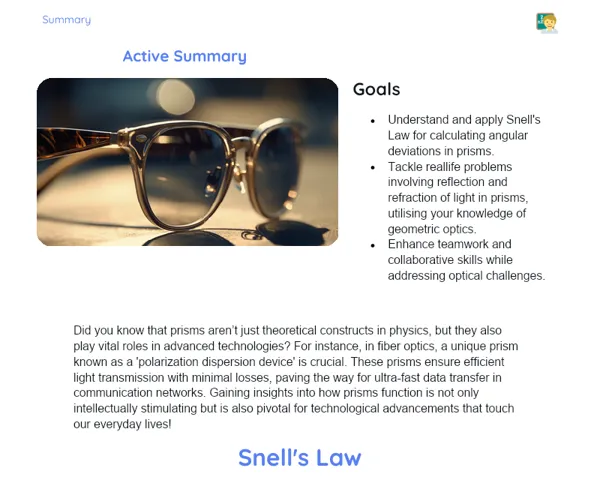Goals
1. Grasp the idea of linear expansion and see how it affects everyday metal structures.
2. Tackle calculation problems related to the linear expansion of iron rods.
Contextualization
Linear expansion is a well-known phenomenon where materials, especially metals, stretch or contract when the temperature changes. Think of it like this: while constructing a metal bridge or even laying railway tracks, if we ignore the effects of thermal changes, the structure may face serious issues over time. For example, our railways incorporate small gaps between tracks to allow for expansion during the extreme heat of summer, keeping the tracks safe and functional. Recognising this concept is key to ensuring the longevity and safety of many structures we encounter daily.
Subject Relevance
To Remember!
Concept of Linear Expansion
Linear expansion refers to the change in length of a material when there is a change in temperature. This process happens because the particles inside the material either move faster or slow down, causing the overall length to increase or decrease.
-
The change in length is directly proportional to the change in temperature.
-
The material-specific coefficient of linear expansion tells us how much a material will expand or contract.
-
The standard formula used is ΔL = L₀αΔT, where ΔL represents the change in length, L₀ is the original length, α is the coefficient of expansion, and ΔT is the temperature change.
Coefficient of Linear Expansion
This coefficient is a fixed value that tells us how much a material expands (or contracts) per unit length for every degree of temperature change. Its value differs from one material to another, and it is essential in calculating real-life expansion scenarios.
-
It is normally given in °C⁻¹.
-
Different materials have distinct coefficients; for instance, iron typically has a coefficient of around 1.2 x 10⁻⁵ °C⁻¹.
-
Knowing this coefficient is crucial for anticipating and designing around expansion in engineering projects.
Practical Applications of Linear Expansion
Incorporating the principles of linear expansion is important in many practical scenarios, particularly in construction and manufacturing. Neglecting thermal expansion can lead to significant structural mishaps.
-
Expansion joints in bridges and railway tracks help by allowing for the material's expansion and contraction.
-
When constructing buildings, careful selection of materials like concrete and steel based on their expansion rates can prevent structural damages.
-
Even precision equipment, such as measuring tools, are made using materials that have minimal expansion to maintain accuracy despite temperature shifts.
Practical Applications
-
Train Tracks: Gaps are purposely maintained between tracks to allow for safe thermal expansion, reducing deformation risks.
-
Metal Bridges: Expansion joints are a standard feature in bridges to manage the expansion and contraction resulting from temperature changes.
-
Measuring Instruments: Manufacturers select low-expansion materials for precision tools to ensure that measurement accuracy is upheld regardless of temperature variations.
Key Terms
-
Linear Expansion: The variation in the length of a material when it experiences changes in temperature.
-
Coefficient of Linear Expansion: A constant that indicates the rate at which a material expands or contracts per unit length per degree change in temperature.
-
Expansion Joints: Components in structures that absorb the expansion and contraction of materials, thus preventing damage due to temperature changes.
Questions for Reflections
-
How does linear expansion affect the safety of structures like bridges and buildings in our local context?
-
What could be the economic consequences of ignoring thermal expansion in engineering designs?
-
How might a thorough understanding of linear expansion influence your career prospects in the engineering and construction fields?
Practical Challenge: Measuring Linear Expansion
This mini-challenge invites you to apply the ideas of linear expansion through a hands-on activity.
Instructions
-
Take a metal bar, such as an iron rod, available at home.
-
Measure the initial length of the rod using a standard ruler and jot down the value.
-
Using a hairdryer, warm the rod for approximately 5 minutes.
-
Measure the rod again after heating and note down the new measurement.
-
Calculate the change in length (ΔL) and compare it with the expected value using the formula ΔL = L₀αΔT. Here, consider the coefficient for iron (1.2 x 10⁻⁵ °C⁻¹) along with the estimated temperature difference.
-
Summarise your observations and thoughts on the experiment in a short report.



